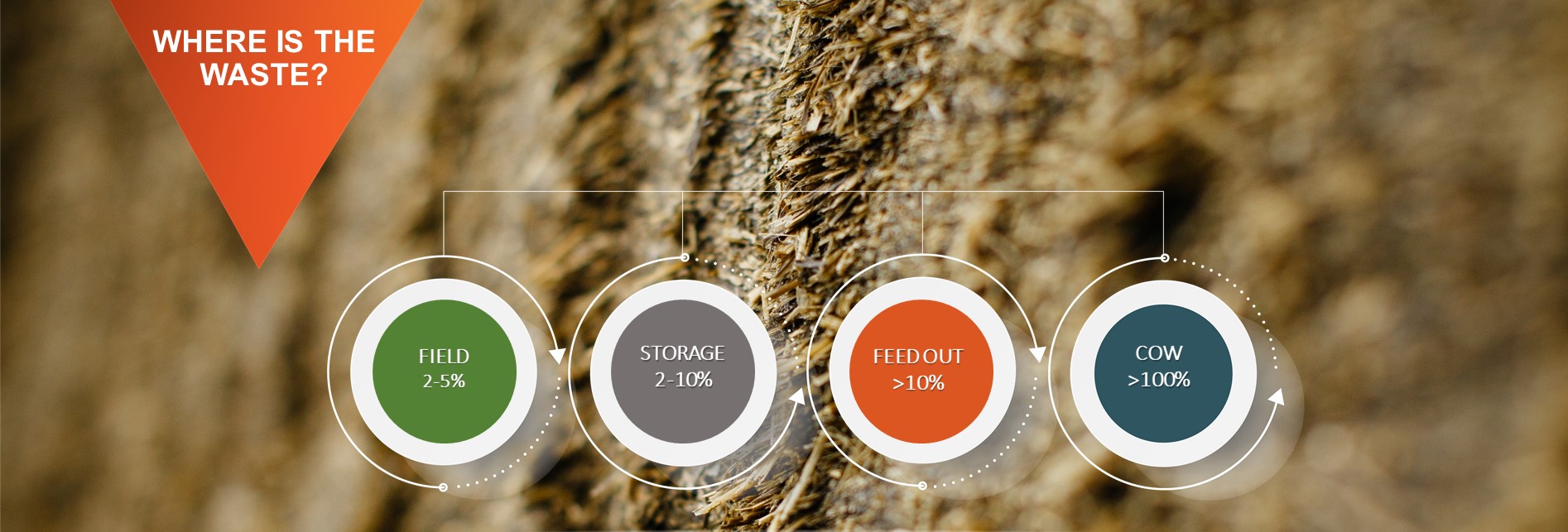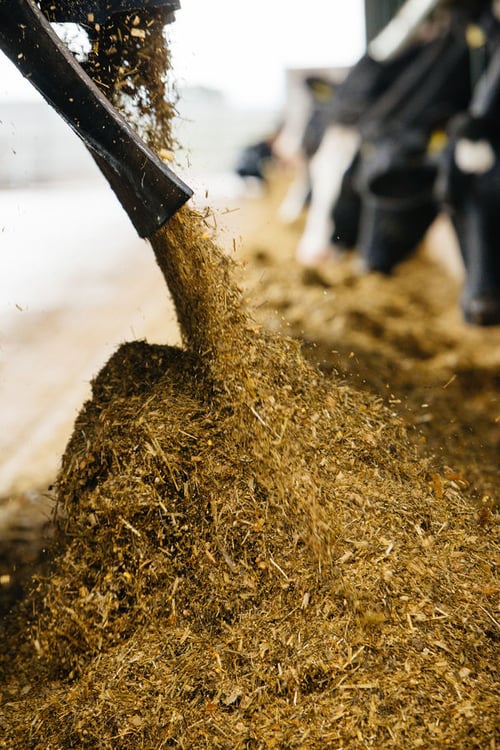
Although feed is the single biggest cost for dairy businesses, accounting for up to 60 percent of variable costs, industry research suggests it is one of the most under-utilised inputs, with as much as 45 percent of its potential lost from field to cow. This equates to a feed waste value of almost €1 for every €3 spent.
To help producers overcome this, Alltech has conducted on-farm assessments looking at a variety of critical control points where feed wastage occurs, including in the field, during storage, at feeding out and inside the cow.
Storage
Results from recent assessments on farms in the UK show that the average loss of dry matter (DM) in silage clamps is in the region of 25 percent. On most farms, it was identified that the greatest losses were in the most nutritive part of the silage resulting in the undigestible proportion increasing. Not only does this cause a reduction in dry matter intake (DMI), it has potential to lead to health issues, such as acidosis, as the balance of the ration can be disrupted.
Feed-out
Our studies highlighted that feeding-out, physical ration presentation and feed barrier space were all issues. There was evidence of sorting and ‘balled’ silage on 19 of the 34 farms assessed. In addition, 23 of the 34 farms failed to meet the target feed barrier space of 65cm per cow, all of which can impact on feed conversion efficiency (FCE).
FCE across the pilot study farms averaged 1.2 and we know incremental improvements in this key parameter can significantly reduce feed wastage.
Cow
Cow health is a key area where efficiencies can have a big impact on feed wastage and the bottom line.
For example, for a unit with average incidence rates of mastitis, lameness, metritis and milk fever, the total financial impact of losses equates to around £39,995 (€45,363). Calving intervals of 419 days and service conceptions of 2.6 could also be costing units around £47,161 (€53,490). In addition to health and fertility issues, drops in rumen efficiency can also add up. During our study we saw a consistent presence of fibre in the dung and some grains demonstrating inefficient rumen function.
Research shows that a feed conversion efficiency (FCE) of 1.2 could comfortably move to 1.3 with specific nutritional strategies, which could have a minimum impact value of 1.4 pence per litre. While our study could not attribute specific losses against environmental parameters, Cow Signals indicates that insufficient feed barrier space, water trough space, or lighting, has a direct influence on lying time and reduces FCE.
Our team continues to assess the extent of losses in other areas of the system on more farms, while also working to develop tools to show farmers the true extent of the financial losses. We ultimately want to help farmers take greater control of feed waste to cut costs and improve margins.





